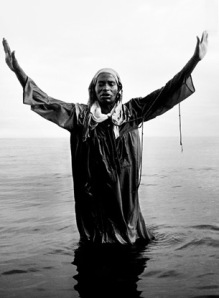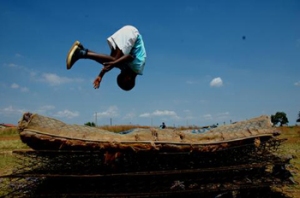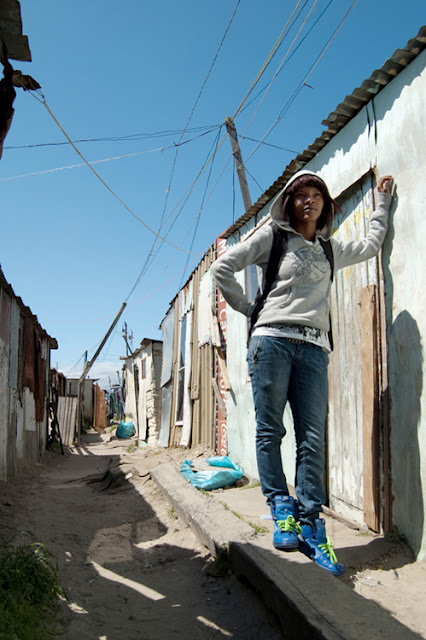
The M.A. program in Visual Culture at New York University requires students to produce a thoroughly researched thesis using original data. My research fulfilled the requirement by traveling to South Africa and fully immersing myself in the community of which my project was based. “Clothing and Dress in South African Townships in the Post Apartheid Era” interrogated the sartorial landscape of a society in transition from social and economic subjugation based on race and the color of their skin.

In order to gain access to the community and resources I enrolled in a NYU Public Health course on HIV/AIDs in the townships communities. While the material was a little outside of the scope of my research, the course oriented me to the people and values of the community. I was able to gain an understanding and perspective of living conditions and everyday life through: lectures on the historical background of South Africa, a 3-day placement in Non-government organization’s (NGO) facility that assists HIV/AIDs infected, Affected and At-risk youth and families in Nyanga Township, a report on the use of tee-shirts to de-stigmatize the virus[1], and access to a well-resourced University Library[2].

So by the end of the course I was somewhat familiar with the Cape Flats, had procured a supervisor and photographer for my thesis research project (a significant portion of the project would be visual, hence photographer) and accommodations for the next few months. Paul Weinberg, Head of Visual Archive of University of Cape Town Library and published photographer, acted as my supervisor and Lindeka Qampi, local street photographer who has also exhibited in Australia, acted as the project’s photographer. At times, I shifted between avid researcher, artistic director, and apprentice as I interviewed subjects, directed photography, and captured shots with my own semi-pro Canon, under the tutelage of Ms. Qampi.

After 4 months of in-depth research, interviews, public transportation, on-foot follow-ups, Xhosa-language learning, note-taking, building relationships, late nights, and before dawn mornings in the townships, I returned to the United States, and completed my thesis and requirements for the M.A. program. I presented a small portion of the images to the NYU community, however, still have yet to exhaust and share the breadth of knowledge I earned and images I compiled from this project. Due to the nature of the project, I have become terribly sensitive about and protective of the work. I experienced many challenges and joys over the course of the project and believed to have earned the trust of many of the subjects in the photographs, therefore feel responsible for protecting their images and integrity.
On outset of the project, I had not realized how sensitive the material was. The research interrogated the impact of the abolition of the Apartheid government and policies on the socio-cultural landscape in the townships from the perspective of the community that has experienced the least change in everyday life and living conditions. How does one ask someone living in the township shanties about changes in society when actual change has yet to come? I struggled between my research responsibilities fueled by my personal and professional interests and anxieties of possibly being perceived as an over-privileged, detached, American student in Africa to exploit the conditions of the impoverished.

Therefore, I have a profound respect for this body of work and have constantly debated (with myself) about how to best present it to the public. It is extremely important to me that the audience, understand the context and subject of the images and not just the artistic composition and visual aspects of the photographs.
In honor of Lindeka Qampi, a few of the photographs have been selected to appear on the Fototazo website[3]. I would like to congratulate Lindeka on the recognition of her work and thank Fototazo for the exposure and mention of the project. The photography-focused nature of the website, limits information regarding the project, but offers a sneak peek into the only photographs released to the public. In time, the images will be re-contextualized and presented in a way that offers insight into the sartorial landscape of South African townships and a new theoretical framework for the fields of visual culture and costume studies in Western academia. As for now, please enjoy the feature on the fototazo website.
The sentiment attached to this experience has left me forever indebted to the subjects and participants that helped see it to fruition, but the work is still incomplete. You will be properly recognized in due time.
[1] Article on HIV/AIDs tee-shirts on Avant Guise website http://avantguise.org/2011/08/27/the-power-of-sartorial-effects-on-hiv-stigma-in-south-africa/
[2] University of Cape Town Library http://www.lib.uct.ac.za/
